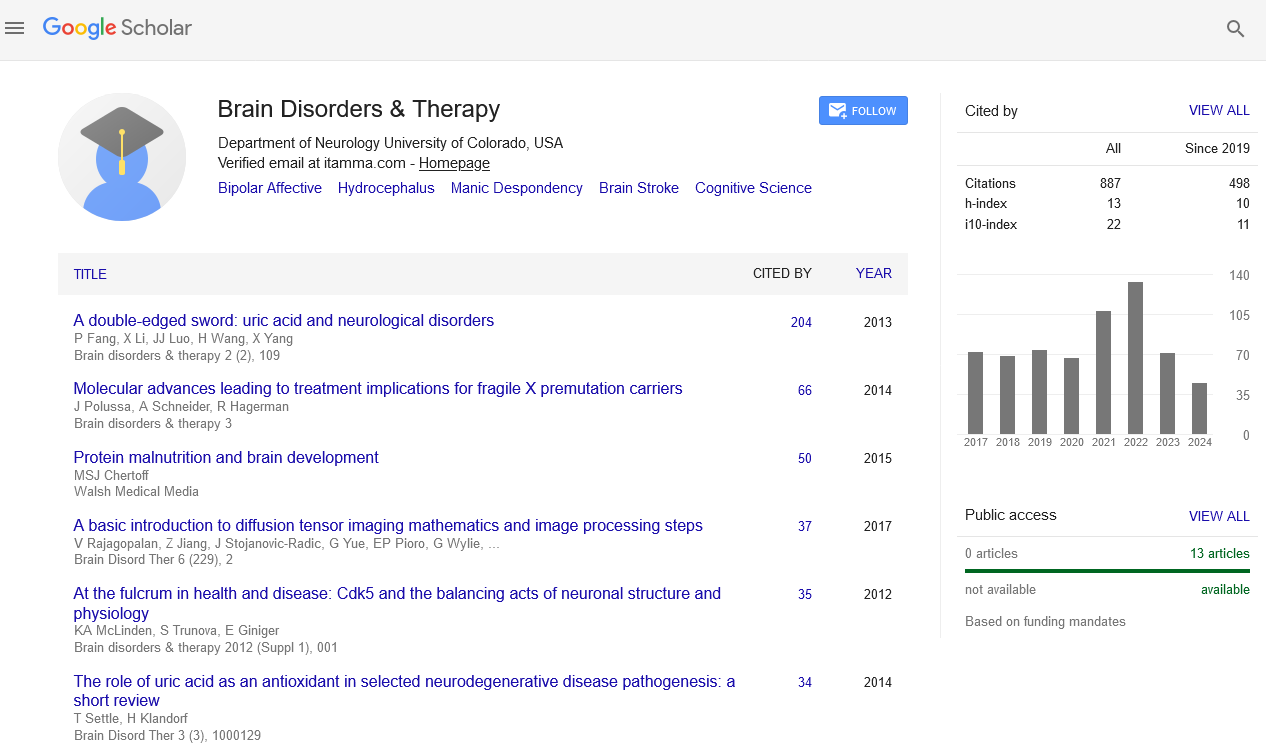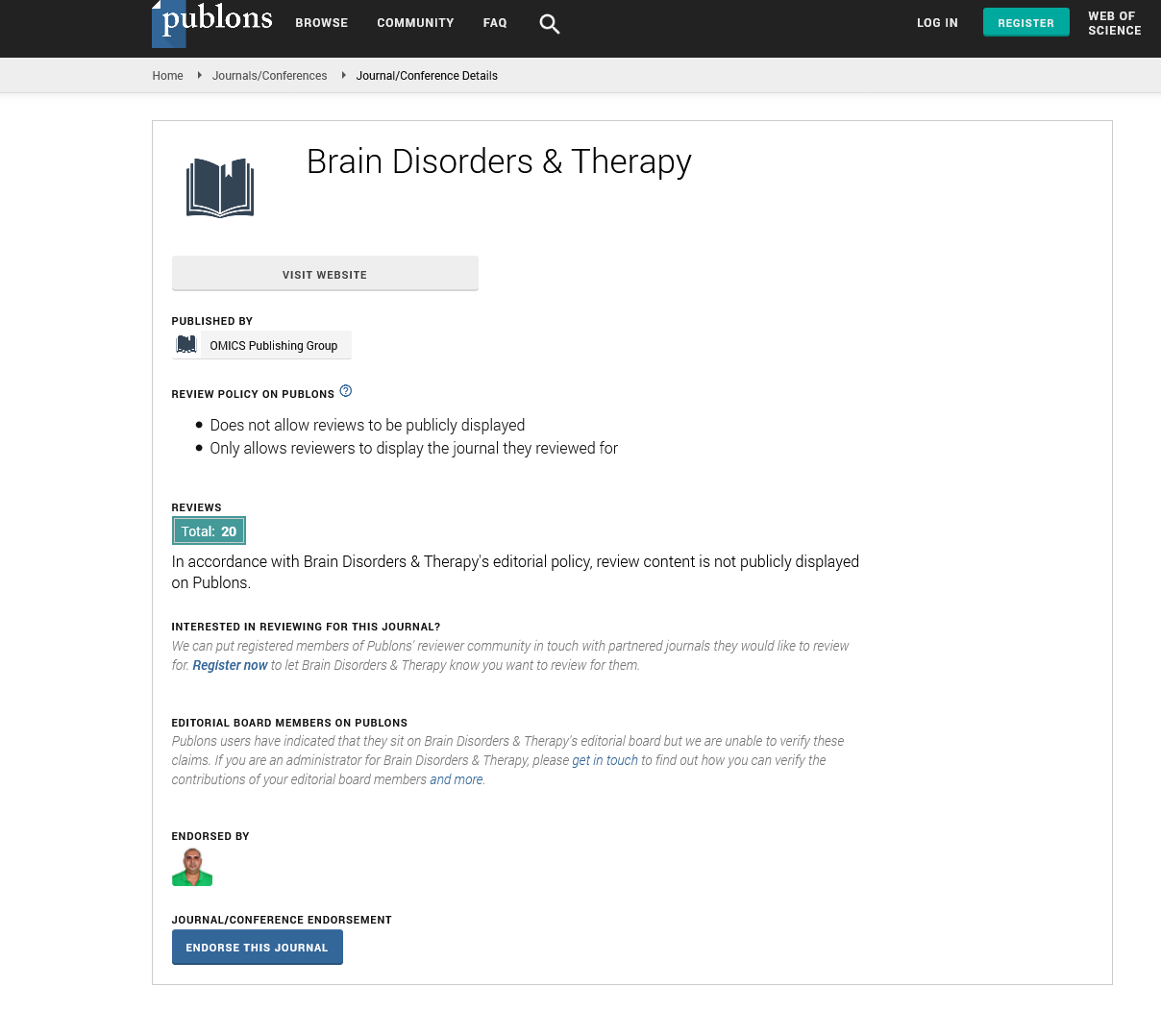PMC/PubMed Indexed Articles
Indexed In
- Open J Gate
- Genamics JournalSeek
- JournalTOCs
- RefSeek
- Hamdard University
- EBSCO A-Z
- OCLC- WorldCat
- Publons
- Geneva Foundation for Medical Education and Research
Useful Links
Share This Page
Journal Flyer

Open Access Journals
- Agri and Aquaculture
- Biochemistry
- Bioinformatics & Systems Biology
- Business & Management
- Chemistry
- Clinical Sciences
- Engineering
- Food & Nutrition
- General Science
- Genetics & Molecular Biology
- Immunology & Microbiology
- Medical Sciences
- Neuroscience & Psychology
- Nursing & Health Care
- Pharmaceutical Sciences
Risk factors and primary Stroke prevention in the population of Republic of Moldova
2nd International Conference on Brain Disorders and Therapeutics
Chicago, USA October 26-28, 2016
Stanislav Groppa and Daniela Efremova
State University of Medicine and Pharmacy, Moldova
Scientific Tracks Abstracts: Brain Disord Ther
Abstract:
Introduction: Stroke is one of the leading causes of morbidity and mortality worldwide. The importance of the problem is determined by social and economic burden of stroke but a good management of risk factors can lead to dramatic changes in the incidence of stroke. Methods: In november 2015 we have initiated an epidemiological study in a village located in the center of the country for estimation of stroke risk factors in the population of Republic of Moldova. The subjects were examined according to our Protocol of risk factorsâ??estimation in the population of Republic of Moldova. This protocol includes: questionnaire, clinical examination, ECG and Doppler Duplex ultrasound of extracranial segment of carotid arteries Results: In the study were included 337 subjects, 215 (64 %) were women and 122 (36 %) men. The mean age was 50.25 years. The most common risk factor was obesity, identified in 157 (46 %) subjects, while 110 (33 %) subjects were overwighted and 70 (21 %) were normal weighted. Second risc factor by frequency was hypertension, noticed in 149 (44 %) subjects. The third risk factor by frequency was migraine 43 (13%) subjects, where 36 subjects were women and seven were men. Thirty one (9%) of examined had atrial fibrillation and 30 (9%) had diabetes mellitus. Thirty one (9 %) subjects were smokers and aterosclerotic plaques was found in 60 (20%) subjects. Left myocardial hypertrophy on ECG was present in 182 (54%) subjects and also on ECG was detected old myocardial infarction at 9 (3%) and acute ischemic changes in 6 (2%) subjects. The most frequent association of risk factors was arterial hypertension and obesity 99 (29%) subjects. Results of laboratory tests showed that glycosylated hemoglobin rate was increased in 52 (18%) of subjects, predominantly in males (19% vs 16%) and was increased with age. Serum glucose was increased in 92 (30%) of studied persons, and again predominantly in males (36% vs 26%). And more then 50 % of subjects had dyslipidemia, so total cholesterol was increased in 175( 58%), LDL cholesterol was increased in 198 (66%) subjects. Conclusions: Stroke is a major health and social problem. Therefore it becomes obvious need to strengthen all efforts in stroke prevention to reduce its impact on society. The are many risk factors involved in appearance of stroke but the degree of their expression differs from one community to another. Study results will allow the identification of specific stroke risk factors and the elaboration of primary prevention strategies with the purpose to minimize burden of stroke in the population of Republic of Moldova.
Biography :
Stanislav Groppa was born in Moldova and obtained his medical degree at the State Medical University from Chisinau, Moldova. At the same University he was completed his fellowship in Neurology. The PhD thesis, post-doctorate and Doctor Habilate title in Medicine he obtained at Russia Medical University from Moscow. He continued his medical training at Bethel, Bielefeld and, as well at Bochum University clinic from Germany. In 1993 he get the title of University Professor, and from 1995 until present days he is Chairman at the Neurology Chair at the "N. Testemitanu " State Medical and Pharmaceutical University.
Email: stgroppa@gmail.com


